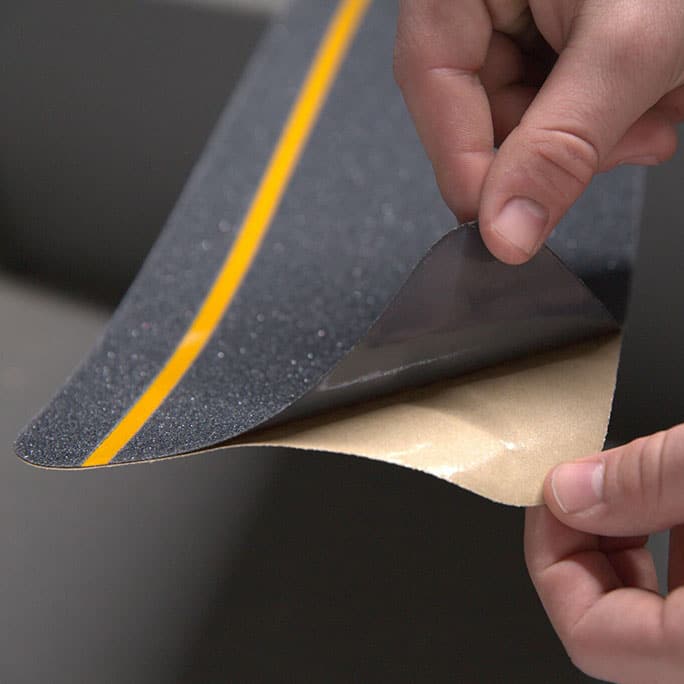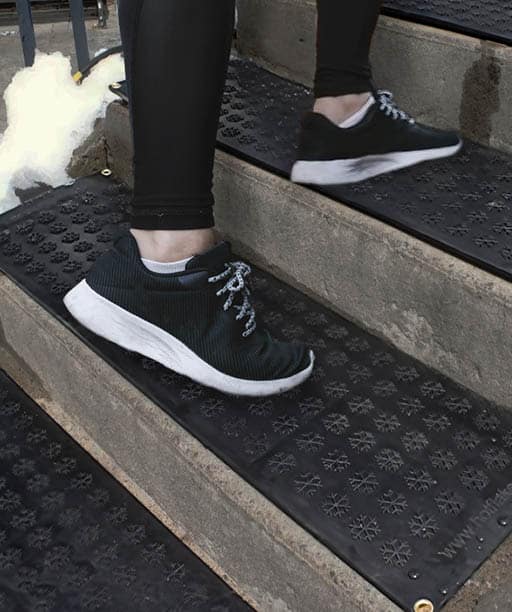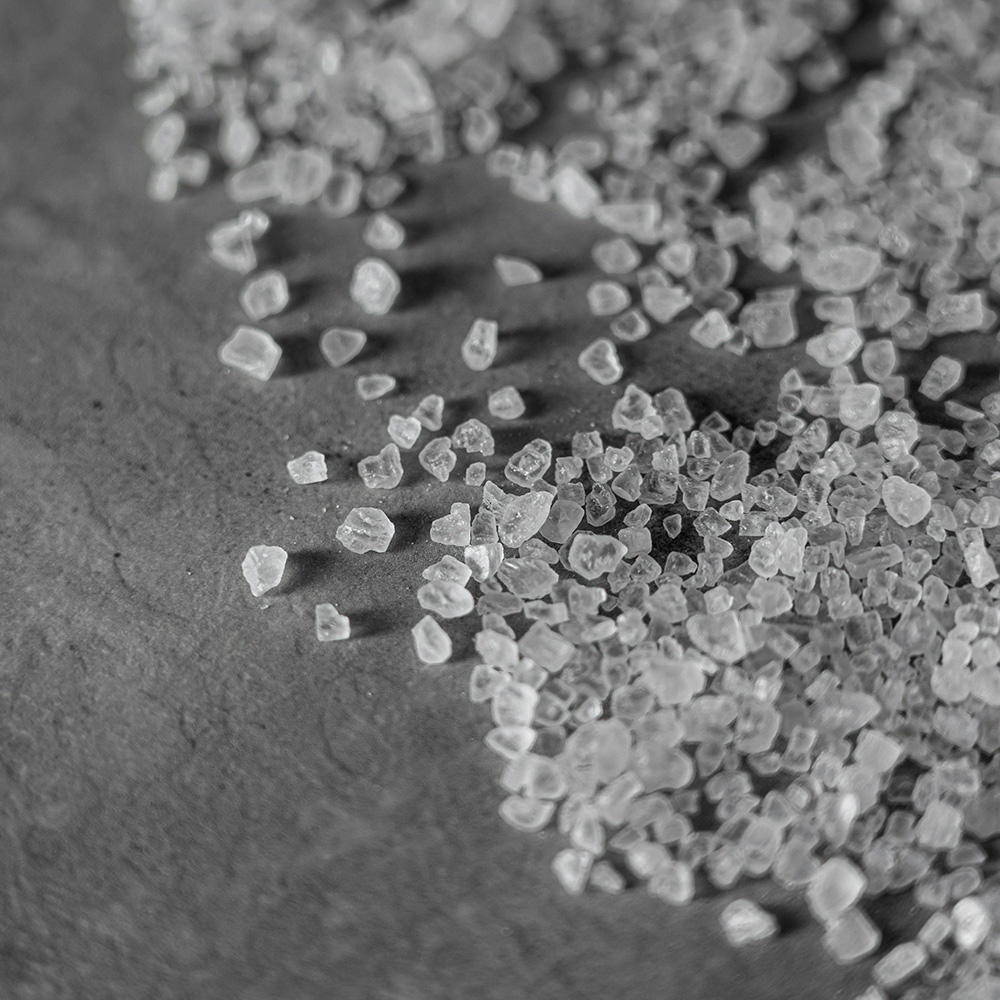
When leaves, moisture, and ice coat outdoor steps in autumn and winter, the likelihood of slipping rises dramatically, particularly for seniors and young children. This guide explains why outdoor stairs become slippery, reviews popular anti-slip products, and discusses the most reliable year-round solutions to keep your stairs safe.
Slippery surfaces are rarely caused by a single issue. On wood, composite, and concrete stairs, the combination of moisture, debris, and temperature changes leads to slips and falls.
Rain, dew, and morning frost coat stair treads with a thin layer of water. Even composite decking, which is ostensibly designed to be slip-resistant, is not immune. Trex acknowledges that although composite decks are durable and have textured surfaces, slips and falls can still occur. When puddles form, composite decking can become slippery, and manufacturers recommend regularly clearing standing water to reduce the hazard.
Wet leaves and plant debris are deceptively dangerous. Wet leaves can be just as dangerous as ice and snow because they hide cracks and create a slick film that causes serious falls. Falling leaves often accumulate on exterior stairs in autumn, just as days grow darker, making hazards difficult to see.
Ice and snow form a hard, slippery glaze. Rock salt or “snow salt” can melt ice, but it often damages surfaces. Salt and sodium-chloride ice melts can discolor composite boards, cause surface corrosion, and break down the deck’s finish, and once the damage is done, it is difficult and costly to repair. Deicers also become ineffective below about 15°F and create wet slush that freezes again.
Algae, mold, and mildew thrive in damp, shaded areas—especially on north-facing steps or those beneath trees or overhangs. These microorganisms feed on moisture and organic debris, creating a thin, nearly invisible layer of slime that dramatically reduces traction. When combined with rain, dew, or melting snow, this slick biofilm can make wood, concrete, and even composite stairs as slippery as ice. Over time, the growth can also discolor surfaces and accelerate decay, making regular cleaning and proper drainage essential to keeping stairs safe and slip-free year-round.
Composite and Trex stairs may feel secure in summer but quickly become slick in winter. Most manufacturers warn that even though their boards are intended to be slip-resistant, composite decking can be slippery when wet. The reason for this is simple: the plastic sheath that protects the boards from insects also serves to hold water on top
The bottom line is that any effective anti-slip solution must address water, debris, and freeze-thaw cycles that cause slips and falls without damaging the stairs themselves.
Homeowners often start with inexpensive or temporary fixes such as peel-and-stick grit tape, rubber mats, carpet treads, or salt. While these options provide short-term traction, they each have significant drawbacks, especially in wet or icy conditions.
Adhesive non-slip tapes use a sandpaper-like surface with glue on the back. They’re inexpensive and quick to install, but their limited usability makes them unsuitable for outdoor steps. Adhesive treads can only adhere to clean, dry, flat, non-porous surfaces and don’t stick properly to rough concrete or unsealed wood. The adhesive must be applied when temperatures are above 50°F and after the wood has been thoroughly cleaned. Cold temperatures cause the glue to contract while heat causes it to expand, leading to failure. Moisture seeps beneath the tape and causes loosening. On average, peel-and-stick treads last only about a year outdoors before they peel up and become a trip hazard.

Outdoor mats and rugs provide some traction, but they can become hazards themselves. Rubber mats trap moisture underneath, creating an ideal environment for mold, mildew, and discoloration. Heavy mats often shift or roll up when people walk on them or when the wind catches a corner. Even when secured, mats offer little traction in wet conditions and are easily damaged by snow shovels. Carpet treads rely on adhesives that can react with finishes or leave sticky residue on wood and composite stairs. Carpet also collects dirt and moisture, making cleaning burdensome on outdoor stairs.

Deicers melt ice by releasing heat into the snow, but they do not add traction and can damage the underlying structure. Rock salt and sodium-chloride de-icers can discolor composite boards, cause surface corrosion, and lead to breakdown of the deck’s finish. Salt residue seeps into crevices, damaging structural integrity. On concrete, salt water seeps into pores, causing internal damage and cracking during freeze-thaw cycles. Rock salt becomes ineffective below 15°F and must be applied repeatedly after storms, leaving a messy residue that can harm plants and pets.

The most optimal permanent solution to make outdoor stairs safe can be found in HandiTread’s aluminum stair treads. These anti-slip stair treads provide a durable, all-weather, maintenance-free alternative to temporary fixes. Unlike tapes or mats, outdoor anti-slip stair treads use raised traction buttons stamped into powder-coated aluminum. This design grips the sole of a shoe or boot and disperses water, snow, or debris up to one inch deep, allowing the foot to contact a solid surface and preventing hydroplaning. Because the treads are made from rust-proof, powder-coated aluminum, they won’t corrode when exposed to moisture and can withstand heavy snow, ideal for deck stairs. A shovel can be used on them without damage.

Quality aluminum treads attach with color-matched screws and can be installed on wood, composite, concrete, masonry, and metal stairs at any time of year. There’s no need to fill cracks or seal the surface.
The raised-button surface provides grip in rain, sleet, ice, snow, or when covered with grass clippings or fallen leaves. Even deep snow can be shoveled off the treads without damaging them.
Premium aluminum stair treads, nosings, and deck strips are built to last decades in residential applications, require no maintenance or replacement, and will not rust.
The raised buttons are self-cleaning; as you walk on them, dirt and snow fall off. The low-profile design prevents tripping and blends with the appearance of wood, composite, or concrete stairs.
Treads are available in earth-toned shades like Java Brown, Chestnut Brown, Obsidian Black, and New England Gray to complement popular deck and stair designs.
Quality aluminum treads provide peace of mind for families with seniors, children, and pets. They’re a permanent investment rather than a disposable product.
For year-round safety on wood, composite, and concrete stairs, aluminum non-slip stair treads with raised traction buttons are the most effective solution. These treads attach permanently with screws, require no adhesives or surface preparation, and provide traction in rain, leaves, snow, and ice. Temporary options like grit tape or mats may offer short-term grip but often peel up or become slippery when wet.
It depends on the product. Peel-and-stick grit treads lose adhesion when moisture seeps under the tape and typically last only a year. Rubber mats provide little traction when covered with snow and can be damaged by shovels. Aluminum stair treads are designed to shed snow and ice, maintain grip in freezing temperatures, and can be safely shoveled without damage.
Composite decking, such as Trex, is usually more slippery than natural wood when wet, so manufacturers recommend removing standing water and debris. Using rock salt to melt ice is not recommended because salt can discolor and corrode composite boards. The most effective way to make Trex or composite stairs non-slip is to install aluminum stair treads or anti-slip stair nosings that grip the shoe or foot and are safe for composite material. Regular cleaning and proper drainage also help maintain traction.
Yes, the HandiTreads outdoor antislip Ramp & Deck Treads are available for wheelchair ramps, loading ramps, and other inclined surfaces. These use the same raised-button aluminum technology as outdoor non-slip stair treads but are sized and configured for ramp applications. They provide consistent traction across the entire surface and meet ADA requirements when properly installed.
Slips on outdoor stairs aren’t just minor inconveniences; they send millions of people to the emergency room each year and cause tens of thousands of deaths. Temporary fixes like grit tape, mats, and salt offer limited, short-lived relief and can create additional hazards. With autumn leaves and winter ice approaching, now is the time to invest in a permanent solution. Exterior non-slip stair treads made from aluminum provide dependable traction in every season, work on wood, composite, and concrete stairs, and often come with lifetime warranties. By choosing outdoor non-slip stair treads for wood, composite, or concrete that actually work year-round, homeowners protect their families and guests from falls while preserving the beauty and integrity of their outdoor steps.